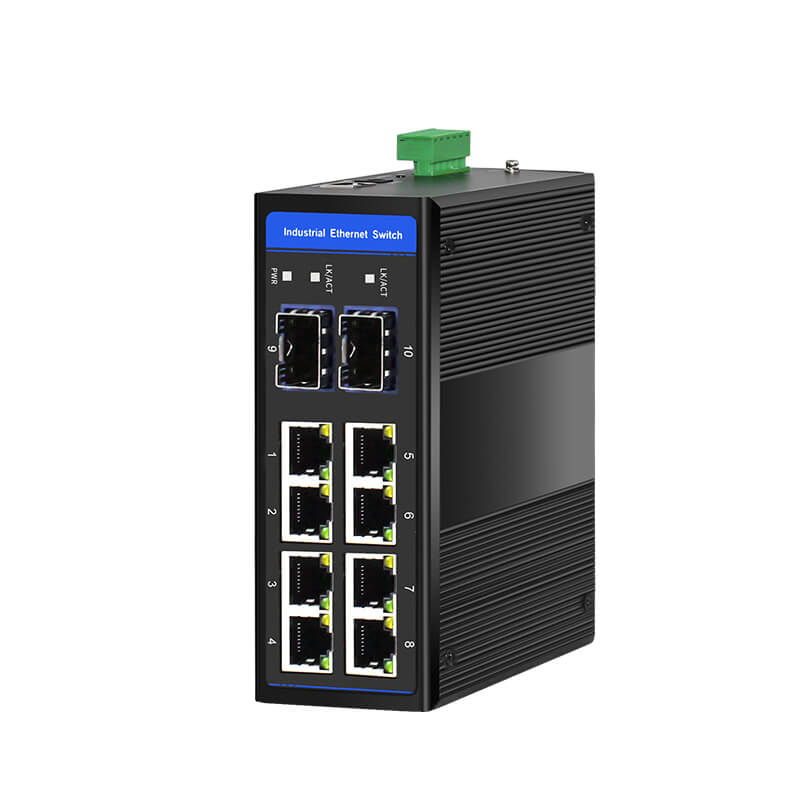How to Buy POE SWITCH Better Than Anyone Else For Your Industry?
2022.02.20 / By Sailsky
How to choose a switch to power IP cameras?
POE switch (Power over Ethernet) is a technology for powering devices such as IP phones, routers, and IP cameras over network cables.
However, many do not know how to use PoE to power digital security cameras. As an industry standard, PoE technology has been common in all types of video monitoring projects for many years.

Improve energy efficiency and reduce the cost of technical labor
This standard has simplified the installation of the network. It improves energy efficiency and reduces the cost of technical labor with electricians. Today it is enough to run only one network cable from a POE switch to a device.
In addition, a PoE is easy to install in the control room and provides power to all devices at the same time. Moreover, you can track how much power each device uses by monitoring this indicator in the management interface of the PoE.
Power required for the correct operation of the system
Before turning on the IP device, it is necessary to check the total power required for the correct operation of the system. Once you know this information, you can use the correct type of POE switch or power injector that will suit your needs.
The following is a standard based on the power that can be common by devices:
So when you buy an IP camera. Just look at the datasheet or manual to make sure its specification is in accordance with *IEEE 802.3af or 802.3at standard.
Which one is best for your video surveillance system?
Older IP cameras use two cables for power and data to the camera, while modern IP cameras only use a cable for data and power.
How data and power are transferred in POE switch?
Small projects require a simple solution and the use of a quality network. PoE makes the system simpler, cheaper, and easier to manage.
At the same time, we advise you not to buy switches of unknown brands. Although they are a little cheaper, their quality is much worse. Pay better attention to products from brands such as HP, Dell, Cisco, and Netgear. Buying a switch from one of these companies, you can't go wrong.
Instead of a switch, you can also use PoE Injector. This is a device that is easy to install between a conventional network switch and IP cameras.
How to use a POE switch?
For example, when installing a large number of IP cameras. You want to turn them all on with a switch. The first thing you need to consider is how much power one camera consumes and multiplies by their number in the system.
Let's say you have 24 cameras and each consumes 12V, then 24 x 12 watts will get 288 watts. This is the total power required for all IP cameras to install.
In the catalogue of switches, we see that IEEE 802.3af is supported on all ports. Note that the camera consumes the maximum when using PoE Class 3 12W.
Therefore, you need a POE switch that is equal to or greater than 288W for the CCTV system to work properly. When buying a switch, make sure that it has enough power to power all cameras in the system.
Power over Ethernet (PoE): ethernet network infrastructure
Power over Ethernet (PoE) is a technology that delivers electrical power along with data over an Ethernet network infrastructure. For the first time, PoE technology develops to simplify the deployment of VoIP phones. It eliminates the need for an additional power source on the phone itself.
Since then, POE switch technology has played an important role in increasing the number of devices connected to the network, especially in cases where it is difficult or expensive to install additional electrical outlets at the place of installation of such devices.
The use of active access points and IP surveillance systems
PoE technology allows the expansion of Wi-Fi networks through the use of active cameras.
When data and power delivered by a single cabling infrastructure, without good design and proper verification methods, a lot can go wrong. Thorough knowledge of the power and data specifications for the devices deploys.
An understanding of the characteristics of the existing or new POE switch that will be common to connect the devices and power supplies is a prerequisite for a smooth deployment. This article describes PoE technology, including the recently adopted IEEE 802.3bt specification, also called PoE++ or 4PPoE.
How does PoE technology work?
What are the features of deploying PoE systems, especially as the demand for electrical power increases?
Are there proven practices for testing and troubleshooting during deployment?
Before diving into POE switch technology, it is important to understand a few key terms:
- PSE (Power Source Equipment): This is a device that provides power supply. The PSE device can be either End-Span or Mid-Span (see below).
- PD (Powered Device): This is a device that receives power from the PoE system.
- End span: The End-Span power supply is usually a network switch or injector that provides power from the end of the cable line.
- Midspan: A Mid-Span power supply is a device (usually a POE injector) that provides POE power from the middle of a cable line, and locates between the network switch and the PD.
POE switch technology uses twisted-pair cables to connect between PSEs and PDs. The cross-section and material of the cable and connecting equipment (patch panels) affect the power loss.
The End-Span and Mid-Span power configurations for PSE
End-Span equipment is typically common in new installations where other upgrades to the switch require (migration to 1000-BaseT technology).
Deploying a switch will provide more convenient power to your network and add fewer potential points of failure and complexity than a Mid-Span configuration.
The Mid-Span configuration in POE Switch
When a switch, even if it does not support POE switch technology, is undesirable to replace, and only a power supply needs to add to the network, usually using a PoE injector.
When using a completely passive Mid-Span power supply in the data line, the maximum distance between the switch and the PD must still be less than 100 meters. Some Mid-Span sources can be powered by a PoE end device and act as a signal repeater to extend the distance between the PD and the switch beyond the 100-meter limit.

